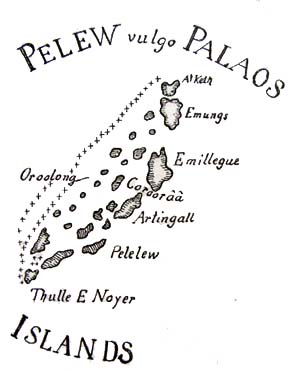
 Devoted Ukulelia readers will recall that back in October of last year, we reported that luxury retailer Neiman Marcus was selling gourd-backed ukuleles made by luthier Danny Ferrington in its famous Christmas Catalog. In our article, we made a snarky remark about Neiman Marcus's copywriter erroneously claiming that the ukulele was "created in the Hawaiian islands by Micronesian immigrants in the 1870s". Well, this morning, we are eating our words.
Devoted Ukulelia readers will recall that back in October of last year, we reported that luxury retailer Neiman Marcus was selling gourd-backed ukuleles made by luthier Danny Ferrington in its famous Christmas Catalog. In our article, we made a snarky remark about Neiman Marcus's copywriter erroneously claiming that the ukulele was "created in the Hawaiian islands by Micronesian immigrants in the 1870s". Well, this morning, we are eating our words.In an article submitted to the Hawaiian Journal of History, a very different story about the ukulele's origins is being told. According to the article's author, the ukulele did not originate with the Madeiran Machete, as had been previously thought, but from the Micronesian Ni’hi.
The Micronesian Ni'hi is a rhythmic instrument made from a dried gourd, and was originally strung with crude shark-gut strings. They were discovered in 1877 in a market in Palau by Egbert Marcus, younger brother of retail tycoon Herbert Marcus, while traveling on business, looking for exotic items for his brother’s Dallas store. Marcus was enchanted by the indigenous instrument and purchased several gross, intending to sell them at a significant markup upon his return to Dallas.
On his ill-fated return trip, Marcus stopped in Hawai’i. Little is yet known of his stay, but it seems that he presented King David Kalakaua with one of the Ni’hi, presumably as a token of gratitude. After departing Hawaii in early 1878, his ship, the Fumiste, was lost at sea, and no further word of its passengers and crew is extant.
Now is when the Ravenscrag and its Madeiran passengers enters the story. Students of ukulele history will know that the Ravenscrag arrived in Hawaii in 1879, bringing with it future ukulele builders Joao Fernandes, Augusto Dias, Jose do Espirito Santo and Manuel Nunes. After arriving in Hawaii, Nunes and the others encountered Hawaiians playing Ni'hi, which had by then become wildly popular.
Nunes apparently unimpressed, derided the crude instrument, stating that it appeared to made out of a "big pea". (Linguists are now speculating that he called it a foder ervilha, or f***ing pea, which was reported in the contemporary journals as the more polite "jumping pea". A typesetting error in the Honolulu Star rendered it "jumping flea", and hence ukulele.)
The rest of the ukulele's history continues along its more familiar path from there, with Nunes, et al, reinventing the Ni'hi (now ukulele) along the lines of their traditional Madeiran instruments. As for Egbert Marcus, the story of his travels eventually reached his brother Herbert on a visit to the World's Columbian Exposition in Chicago in 1893, which featured Hawaiian musicians playing the ukulele, and regaling visitors with stories of the "Ni'hi Man" Marcus who first brought the diminutive instrument to their shores. Link to full story here.

6 comments:
Ha Ha April Fool
Good to know it's an April Fools joke cause I couldn't find ANYTHING to confirm anything in this story.
Good one!!!
man, you had me goin' there for a minute.....then again, where did the "new tuning" of the uke vs. the machete come from? It was the four primary notes played in the Hawaiian nose flute!!!
I always had my doubts about "jumping flea," Gary.
The tropical clime being what it is, "humping flea" seemed to be far more likely. And turns out I wasn't far off.
So, how did this rate as a shaggy dog story? Scale of 1 to 10 (high), Ni'hi Man Marcus: I think it's at least an 8.
huyooooo it got me eheeee
Post a Comment